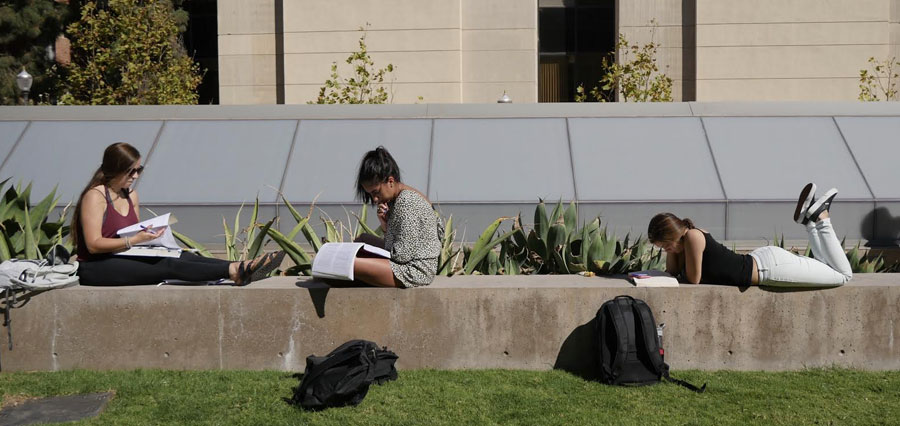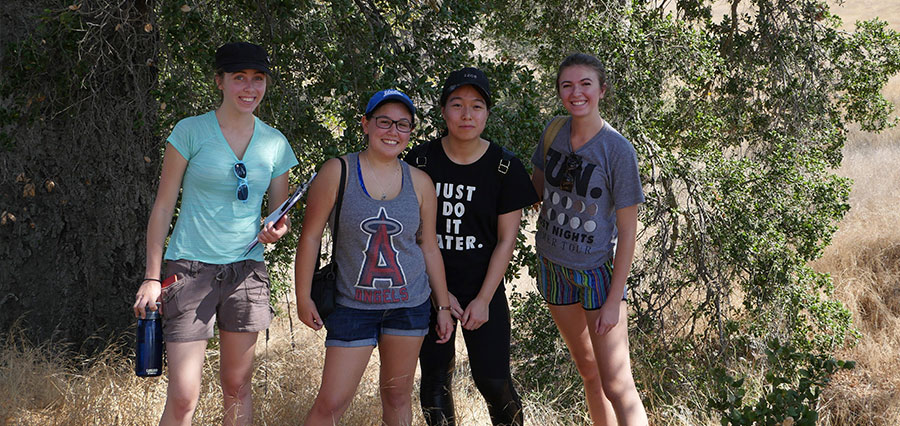Campus Life

When school is in session, UCLA effectively becomes a city of 80,000 people, nested in one of the world’s most diverse megacities. The population of greater L.A. is 18.68 million, and it’s growing. Yet there is a wealth of nature all around—25 percent of the county is dedicated parkland. From the Santa Monica Mountains to the beaches of Malibu, Los Angeles is a case study in how an urban humanity interacts with nature. Water, food supply, energy, pollution and environmental justice are all part of the picture.
Taking on major challenges, UCLA aims to reduce potable water use by 36 percent and become the first major research university to reach carbon neutrality by 2025. Students have strong voice in policy decisions by sitting on sustainability committees. And through UCLA Grand Challenges, the university strives to make L.A. County sustainable in energy, water and ecosystems by 2050.
Students play a large role in finding solutions by:
- Using the campus as a living lab to research topics including stormwater capture, green purchasing and native habitat restoration on student-led action research teams.
- Living in a freshman sustainability-themed dorm that explores earth-conscious lifestyles and environmental advocacy.
- Joining student-led environmental groups that take on issues ranging from renewable energy to educating L.A.’s youth.
- Producing public events and services such as the university farmers market, Earth Day activities and “Ecochella”—an environmentally-friendly twist on the massive Indio music festival.

Spending time in nature
Los Angeles and UCLA have the best of both worlds when it comes to studying the environment—lots of people and lots of nature, though you may not know it by reputation. Twenty-five percent of L.A. County is protected parkland, from the Santa Monica Mountains to the Angeles National Forest. Students and alumni alike take advantage of these open spaces on their own or in groups such as the Hiking Club and the Bruin Naturalists Club.
There’s plenty of green on campus, too. The Mildred E. Mathias Botanical Garden is a place of beauty and biodiversity, learning and relaxation. Meanwhile, Sage Hill features native flora and fauna, with 50 higher plant species, seven mammals, 17 species of butterfly and 30 resident and migratory bird species. And drought-tolerant gardens are just steps from the front door of IoES.
